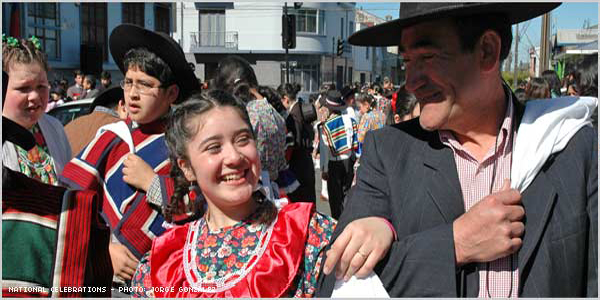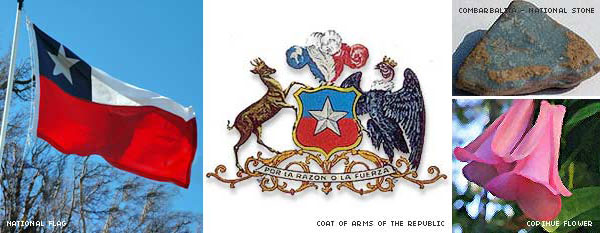ADVENTURE TRAVEL in Chile
More about Chile

![]()
There are several theories as to the origin of the name “Chile”. One of the most outstanding feature writers referring to this designation is abbé Molina, a Chilean scholar and historian who asserted that “Chile” derives from the Mapuche word trih or chi, a voice used to call a local bird.
According to Diego de Rosales, a researcher from the XVIII century, “Chile” was the name of the native tribal chief who governed the valley of the Aconcagua before the occupation of the Inca empire. In turn, for historian Ricardo Latcham, it was the Incas who brought along a group of mitimaes natives who gave the region the name of “Chile”, the same name they had given to a river in Peru.
The total surface of Chile, including its continental, Antarctic and insular areas is 2,006,096 km2, without considering its territorial sea and the corresponding continental platform. The mountains forming the Coast and the Andes Mountain Ranges, parallel to one another, give shape to a central valley that gets into the sea as it reaches Corcovado Gulf only to reappear in the shape of archipelagos, peninsulas and fjords up to Cape Horn.
The effect of erosion and the action of volcanoes have given shape to various kinds of sceneries all along the territory which give special features to each region in the country.
The latitude, altitude and closeness to the sea determine Chile’s climate. Advancing from North to South, the rainfall regime increases and temperatures decrease. The desert spreads from the Peruvian border to the Copiapó River, setting an area of scarce rainfalls with an average temperature of 16° C which begins to decrease as the Andes Mountain Range is ascended. To the South of the Copiapó and up to the Aconcagua River, the rainfall index increases, with an annual average of 113 mm and an average temperature of 15° C. From this waterway to the Bio Bío River, rainfalls are concentrated in the winter and they do not surpass the 360 mm; instead, the temperature goes down by one degree, thus setting an average of 14° C.
From the Bío Bío to the Corcovado Gulf, the rainfall average is 12ºC and between 943 and 2,488 mm. And, finally, from this gulf to Cape Horn, the temperature decreases to an average of 9° C whereas rainfalls reach 2,820 mm.
The latest statistic data provided by the National Census carried out in 2002 throw a result of 15,589,147 inhabitants, with a population density of 20.4 inhabitants per km2 and an average age of 30.04 years old.
The Metropolitan Region concentrates most of the population, with 6,061,185 inhabitants, followed by the Bio Bío, Valparaíso, Los Lagos and Maule Regions.
Spanish is the official language. In some areas of the country, some tongues spoken by the native peoples, such as mapudungún (mapuche), quechua and rapa nui, are still used.
There is complete freedom of worship. Though the Roman Catholic is the most popular religion in Chile (professed by 76.7% according to the National Census carried out in 2002), the Protestantism, Judaism, Islamism, Greek Orthodox and Russian Orthodox religions, to mention some, are manifested in the country.
Chilean currency is ruled by the Chilean Peso ($ CLP), issued in metallic coins of $1, $5, $10, $50, $100 and $500 and banknotes of $1,000, $2,000, $5,000, $10,000 and $20,000.
Chile is a democratic republic ruled by a national constitution whose latest reformation was carried out in 1980. Its system of government is based on three branches: executive, legislative and judicial. The executive branch is represented by the president of the republic voted directly every 4 years. The legislative branch is represented by the National Congress, with seat at Valparaíso, and is made up by the Senate, with 48 members, and the House of Representatives, with 48 members. The judicial branch is made up by the Supreme Court and courts located all over the country.
The State is organized in 13 regions run by an intendant appointed by the president, who also appoints the governors of the 50 provinces that form the regions. In turn, there are 341 municipalities run by mayors and a variable number of town councilors voted every 4 years.
The symbols of the country are the national flag, the coat of arms of the republic and the national anthem. The flag, raised for the first time in February 12, 1818, has a red stripe, a white stripe and a five-point star on a blue background which symbolizes the powers of the State. The coat of arms was created with the same colors by Carlos Wood Taylor in 1834. The anthem was composed by Ramón Carnicer (music) and Eusebio Lillo (lyrics).
The national flower is the copihue, which grows in the forests of the Valparaiso region up to the Lakes region.
The combarbalita is the national rock. It is a precious ornamental stone of volcanic origin.

![]()
JANUARY |
MARCH /APRIL |
MAY |
MAY 21st Navy Day |
JUNE 29th Saint Peter and Saint Paul |
AUGUST 15th Assumption of Mary |
| SEPTEMBER 18th Independence Day |
SEPTEMBER 19th Army Day |
OCTOBER 12th Columbus Day |
NOVEMBER 1st All Saints |
DECEMBER 8th Immaculate Conception |
DECEMBER 25th Christmas |
* Variable Holiday.
© 2007-2025 Total or partial reproduction forbidden. Derechos de Autor 675243 Ley 11723
Who we are | Contact us | Press and Publicity | Terms and Conditions




